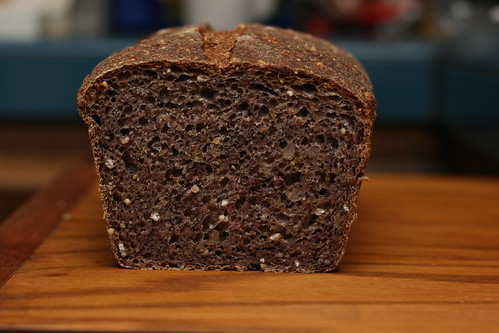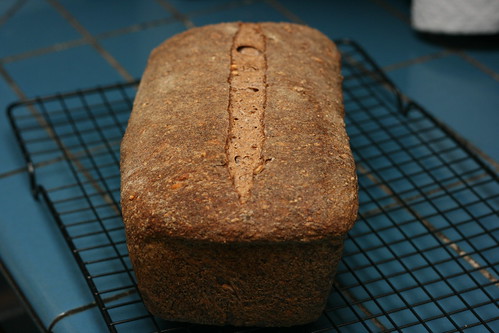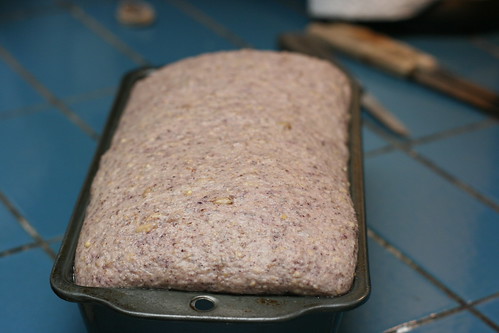I gave up on this bread completely not so long ago. The dough always started out OK, but by the end of the bulk ferment it would be extremely slack and sticky, and by the time it went into the oven it was essentially a puddle.
After several attempts it became clear that it was simply not going to work so I trashed the paper copy and deleted the spreadsheet and that was that. Two days later I happen across this Farine blog post and learn that teff flour will do awful things to bread dough (of this fact I have become keenly aware) unless it is cooked a bit first. So simple! I would not have thought to try that in a million years. (I had forgotten about theTFL thread on this subject I had read. During this whole process my computer was having some kind of disagreement with the TFL site and wouldn't let me look for help here. It's better now:) )
So I gave it another go and, hey, it's a loaf of bread this time! Still not the strongest dough, it is manageable at least.

Now that I have a starting point it's time to start tinkering and asking questions. First off, I wonder if adding the flax meal to the scald is helping, hurting or having no effect? I will likely leave it out next time. I think I forgot to add the salt to the scald, so that's another change to try next time.
The hydration felt pretty good, I don't think I would go any higher.
The mixing... the dough was pretty slack by the time I shaped, so I can't decide if I want to try being gentler next time or try to develop more strength.
Fermentation time was, I think, at about it's maximum. I imagine the overnight scald helped speed things up - another reason I'm thinking about leaving the flax out of the scald next time.
So many questions, can you tell I think this bread could be better? Still, it's pretty good. There's an extra sweetness and nuttiness in this bread that works for me. Definitely one worth tinkering with.
Marcus












